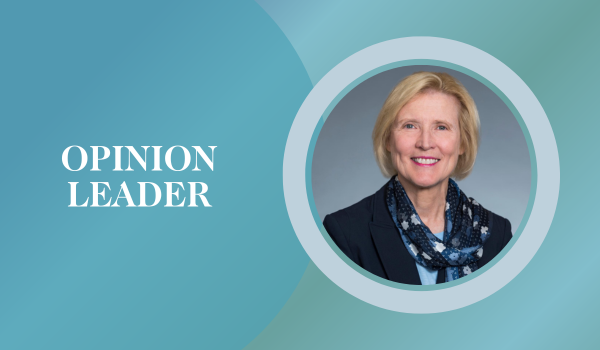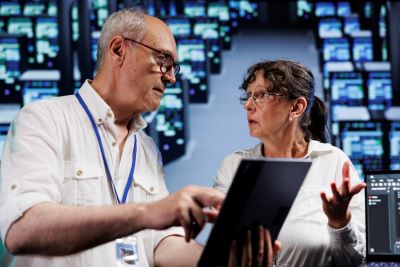Expert panel offers suggestions on how to fix the decline in U.S. science
NOTE: See also main story, "National research strategy and 'modernized' university-industry partnership needed to stem decline in U.S. science"
How to fix the decline in U.S. science and regain American leadership? Expert panelists offered their suggestions following the National Academy of Sciences’ inaugural address on the state of U.S. science.
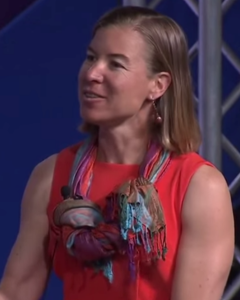 “We’re really at a crisis point right now. Trust in science is declining,” said journalist and author Christie Aschwanden (photo at right), producer and host of Scientific American’s “Uncertain” podcast series.
“We’re really at a crisis point right now. Trust in science is declining,” said journalist and author Christie Aschwanden (photo at right), producer and host of Scientific American’s “Uncertain” podcast series.
There are campaigns by “certain bad actors” that are trying to undermine trust in public institutions, scientists and the media, she said. “Science has become politicized, but the media have become politicized, too.”
Social media driven by artificial intelligence has the potential to flood people with more and more misinformation, Aschwanden said. “I think it’s going to become increasingly difficult to fund credible sources of information.”
“People trust messages from people they trust,” she said. “If they do not trust the messenger, they’re never going to trust the message.”
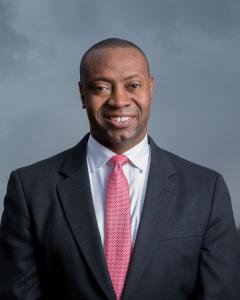 Building trust in science requires academics to get outside their ivory tower and communicate with the public, said climate researcher Dr. James Marshall Sheperd PhD (photo at left),professor of geography and associate dean at the Franklin College of Arts and Sciences at the University of Georgia.
Building trust in science requires academics to get outside their ivory tower and communicate with the public, said climate researcher Dr. James Marshall Sheperd PhD (photo at left),professor of geography and associate dean at the Franklin College of Arts and Sciences at the University of Georgia.
If scientists don't communicate with the public, there are forces, including on the internet and social media, with their own agendas and narratives that will fill the gap in information, he said.
Shepherd wrote an article for the National Academy of Engineering, making a case for the “science popularizer.” He argued that science popularization “should not be considered as inferior to or detracting from traditional scientific research.”
The currency of academia and research in federal laboratories is peer-reviewed literature and research funding, he wrote. “Both are of first-order significance in the promotion or tenure process. As such, many scholars do not feel incentivized to engage in any activities that are not aligned with the ‘publish or perish’ directive or securing funding.”
Shepherd advocated including incorporating science communication and traditional and social media training for scientists.
“We fundamentally need to reimagine how we do science, convey science and how we’re even perceived as scientists,” he said at the National Academy of Sciences event.
One way to depoliticize science and build people’s trust in it is to connect science with other people’s value systems, he said.
In climate change science, he said – paraphrasing Pennsylvania State University professor of meteorology David Titley – “the ice doesn’t care whether you’re blue or red [Democrat or Republican]. It just melts.”
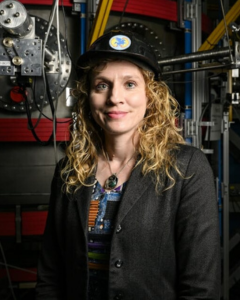 “It’s important to separate the science from the value judgments,” agreed Dr. Stephanie Diem, PhD, (photo at left) assistant professor of nuclear engineering and engineering physics at the University of Wisconsin-Madison.
“It’s important to separate the science from the value judgments,” agreed Dr. Stephanie Diem, PhD, (photo at left) assistant professor of nuclear engineering and engineering physics at the University of Wisconsin-Madison.
“The science can inform decisions, but the science doesn’t tell you what thing to do,” she said.
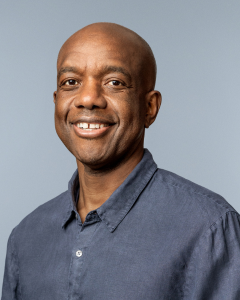 Dr. James Manyika, PhD (photo at right), senior vice-president of research, technology and society at Google and Alphabet, said a way to make a difference on the topic of climate change is to actually deliver benefits to people, such as technologies that protect them and their homes and businesses from floods and wildfires.
Dr. James Manyika, PhD (photo at right), senior vice-president of research, technology and society at Google and Alphabet, said a way to make a difference on the topic of climate change is to actually deliver benefits to people, such as technologies that protect them and their homes and businesses from floods and wildfires.
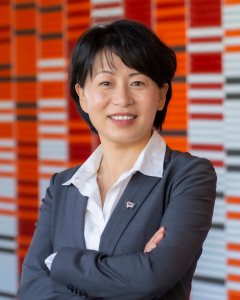 Whenever scientists talk about science, “make it absolutely relevant to people’s daily lives,” said Dr. Grace Wang, PhD (photo at left), president of the Worcester Polytechnic Institute.
Whenever scientists talk about science, “make it absolutely relevant to people’s daily lives,” said Dr. Grace Wang, PhD (photo at left), president of the Worcester Polytechnic Institute.
Diem said her group has held discussion groups – some lasting eight hours – with community members that helped inform, engage and connect both the public and scientists.
Training scientists in science communications should be supported with federal research funding, she suggested.
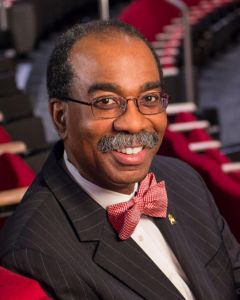 Dr. E. Albert Reece (photo at right), professor and senior scientist at the University of Maryland’s School of Medicine, said his faculty every year hosts a program where people in the community come over 1 ½ weeks to learn about health, clinical trials and other topics the community members themselves recommend.
Dr. E. Albert Reece (photo at right), professor and senior scientist at the University of Maryland’s School of Medicine, said his faculty every year hosts a program where people in the community come over 1 ½ weeks to learn about health, clinical trials and other topics the community members themselves recommend.
Transformation needed in universities and university-industry partnerships
Universities must transform and there needs to be a new modernized model of university-industry partnership, the panelists said.
“When you look at other countries, in the U.K. and Europe, they rethink science impact,” Diem said. Such countries look at how science is impacting policy, people’s everyday lives and the environment, and then put that perspective into scientific assessment processes as well as in university promotion and tenure processes, she said.
“Some of our most exciting, innovative thought in STEM comes from our junior faculty,” Shepherd noted.
“Yet they feel penalized for engaging [with the public] because we’re stuck in the inertia of the academic system that we reward,” he said. “We have to incentivize and engage young scholars.”
Manyika pointed out that a lot of the existing government research grant mechanisms tend to fund incremental work, rather than innovative, “blue sky” research that could lead to disruptive technologies. Funding for this “speculative” research most often comes from industry or philanthropic groups, he said.
Innovation ecosystems must be regional in focus and “nucleated,” with connections based on people, Wang said.
The new university-industry partnership model must involve “organic collaboration” that includes multiple academic and industry partners, along with government agencies and non-profit foundations, she said. “We need to all work together.”
A national research strategy should focus on shortening the lengthy cycle of turning new ideas into technologies, then educating and providing the talent stream to work with these new technologies, followed by policy support, and finally the infrastructure needed, Wang said.
“We need to have collaborative funding – federal, industry, philanthropy – based on a national research agenda or priorities,” Reece said.
There are populations areas in the U.S. that haven’t benefited from advances in biomedical research, he noted. “We’re seeing a rising tide, a rampant tide of health inequities across the nation.”
The federal government needs to prioritize research that informs solutions for health equity that would be nationally based, Reece said.
Several panelists mentioned the need to broaden the diversity of people brought into the STEM system, for example by including non-traditional and poor communities and groups that may have a different pathway into STEM.
The concept of a “talent pipeline” is flawed, because it implies one way in, one way out, Shepherd said. “We need to think about ways of nurturing and broadening that [concept] and completely dismantling this idea of a pipeline. They are many ways in.”
Developing STEM talent needs to start in the K to12 education system, because the public supports initiatives that teach students the fundamentals of how science works and critical thinking skills, Aschwanden said.
“We need to think about scalable impact in the K to 12 education,” Wang said, including scaling up effective STEM outreach programs across the country. This will take public investment.
The U.S. federal government’s share of domestic R&D now amounts to about 0.7 per cent of GDP, according to data from the National Center for Science and Engineering Statistics.
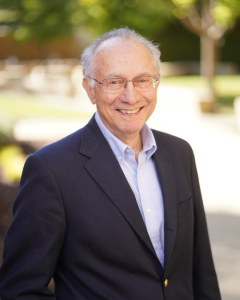 Panel moderator Dr. Harvey Fineberg (photo at right), president of the Gordon and Betty Moore Foundation and past president of the National Academy of Medicine, said a national research strategy aimed at developing STEM talent and creating a modernized university-industry partnership requires sufficient funding.
Panel moderator Dr. Harvey Fineberg (photo at right), president of the Gordon and Betty Moore Foundation and past president of the National Academy of Medicine, said a national research strategy aimed at developing STEM talent and creating a modernized university-industry partnership requires sufficient funding.
“We need more money invested in science,” he said. “And we need it invested in a consistent, reliable, predictable and effective way.
Any national research strategy, Fineberg said, “would be an empty promise if it does not have the fuel of resources to make it a reality.”
R$
Events For Leaders in
Science, Tech, Innovation, and Policy
Discuss and learn from those in the know at our virtual and in-person events.
See Upcoming Events
You have 0 free articles remaining.
Don't miss out - start your free trial today.
Start your FREE trial Already a member? Log in
By using this website, you agree to our use of cookies. We use cookies to provide you with a great experience and to help our website run effectively in accordance with our Privacy Policy and Terms of Service.




